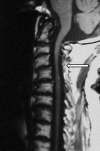Is there a benefit to operating on patients (bedridden or in wheelchairs) with advanced stage cervical spondylotic myelopathy?
- PMID: 20069318
- PMCID: PMC2899963
- DOI: 10.1007/s00586-009-1267-3
Is there a benefit to operating on patients (bedridden or in wheelchairs) with advanced stage cervical spondylotic myelopathy?
Abstract
Surgical treatment of cervical spondylotic myelopathy (CSM) aims to prevent or delay the progression of the disease. Many patients are diagnosed in advanced stages of the disease, presenting severe functional disability and extensive radiologic changes, which suggests clinical irreversibility. There are doubts about the real benefit of surgery in patients who are seriously ill, bedridden or in a wheelchair. The objective of the study is to evaluate the effects of surgical treatment in the clinical outcomes of patients severely affected by CSM. We analyzed patients with CSM who received an operation at a single institution between 1996 and 2008. Cases with a preoperative Nurick score equal to 5 were studied. We describe postoperative clinical improvement and compare the demographics and clinical data between the patients who improved and those who had no improvement. Radiological findings were also analyzed. We evaluated 55 patients operated on. Nine presented with preoperative Nurick score of 5 (16.3%). The mean age was 69.77 +/- 6.6 years (95% CI 64.65-79.90). The mean follow-up was 53.44 +/- 35.09 months (CI 26.46-80.42). Six patients (66.6%) achieved functional improvement when assessed by the Nurick scale, regaining the ability to walk. All patients improved on the JOAm scale, except one. The mean preoperative Nurick score was 5, while the mean postoperative Nurick score was 4.11 +/- 0.92 (95% CI 3.39-4.82) (Wilcoxon p = 0.027). The mean preoperative JOAm score was 6.4, and postoperative was 9.88 +/- 2.31 (CI 95% 8.10-11.66) (Wilcoxon p = 0.011). All spinal cords presented high-intensity signal on T2-weighted images. There was no correlation between the number of spinal cord high-intensity signal levels and clinical improvement. Three out of seven patients (whose image was adequate for analysis) had evident spinal cord atrophy, and two of them did not improve clinically. In the whole sample of patients, the mean length of disease for those who improved was 9.25 +/- 7.31 months (95% CI 1.56-16.93), and for those who did not improve was 38.00 +/- 19.28 months (95% CI 9.91-85.91) (Mann-Whitney p = 0.02). In conclusion, two-thirds of patients with CSM Nurick scores of 5 who were either bedridden or in wheelchairs at the time of diagnosis improved at least one degree on the Nurick scale after surgical treatment, thus returning to walking. The JOAm scale was more sensitive to clinical changes than the Nurick scale. Patients with longer lengths of disease had worse outcomes.
Figures




Similar articles
-
Laminoplasty versus laminectomy with posterior spinal fusion for multilevel cervical spondylotic myelopathy: influence of cervical alignment on outcomes.J Neurosurg Spine. 2017 Nov;27(5):508-517. doi: 10.3171/2017.4.SPINE16831. Epub 2017 Sep 1. J Neurosurg Spine. 2017. PMID: 28862572
-
Comparison of the effect of anterior and posterior neurosurgical treatment for cervical spondylotic myelopathy: a clinical outcome.Acta Neurol Belg. 2019 Dec;119(4):585-593. doi: 10.1007/s13760-019-01184-6. Epub 2019 Jul 12. Acta Neurol Belg. 2019. PMID: 31309455
-
Investigation of the Efficacy of Bilateral Osteoligamentous Decompression via Hemilaminectomy in Cervical Spondylotic Myelopathy: A Clinical Study.World Neurosurg. 2023 Dec;180:e560-e578. doi: 10.1016/j.wneu.2023.09.110. Epub 2023 Sep 29. World Neurosurg. 2023. PMID: 37778625
-
The evolution of T2-weighted intramedullary signal changes following ventral decompressive surgery for cervical spondylotic myelopathy: Clinical article.J Neurosurg Spine. 2014 Oct;21(4):538-46. doi: 10.3171/2014.6.SPINE13727. Epub 2014 Jul 11. J Neurosurg Spine. 2014. PMID: 25014501
-
The Association of Cervical Spine Alignment with Neurologic Recovery in a Prospective Cohort of Patients with Surgical Myelopathy: Analysis of a Series of 124 Cases.World Neurosurg. 2016 Feb;86:112-9. doi: 10.1016/j.wneu.2015.09.044. Epub 2015 Sep 25. World Neurosurg. 2016. PMID: 26409089
Cited by
-
Long-term follow-up results of the Cloward procedure for cervical spondylotic myelopathy.Eur Spine J. 2013 Jan;22(1):128-34. doi: 10.1007/s00586-012-2457-y. Epub 2012 Aug 2. Eur Spine J. 2013. PMID: 22854869 Free PMC article.
-
The Michel Benoist and Robert Mulholland yearly European Spine Journal Review: a survey of the "medical" articles in the European Spine Journal, 2010.Eur Spine J. 2011 Feb;20(2):155-62. doi: 10.1007/s00586-010-1678-1. Epub 2011 Jan 8. Eur Spine J. 2011. PMID: 21221664 Free PMC article. Review. No abstract available.
-
Predictors of outcome in patients with degenerative cervical spondylotic myelopathy undergoing surgical treatment: results of a systematic review.Eur Spine J. 2015 Apr;24 Suppl 2:236-51. doi: 10.1007/s00586-013-2658-z. Epub 2013 Feb 6. Eur Spine J. 2015. PMID: 23386279
-
The effects of surgery on locomotion in elderly patients with cervical spondylotic myelopathy.Eur Spine J. 2013 Nov;22(11):2545-51. doi: 10.1007/s00586-013-2961-8. Epub 2013 Aug 18. Eur Spine J. 2013. PMID: 23955371 Free PMC article.
-
Length of MRI signal may predict outcome in advanced cervical spondylotic myelopathy.Neurosciences (Riyadh). 2015 Jan;20(1):41-7. Neurosciences (Riyadh). 2015. PMID: 25630780 Free PMC article.
References
-
- Cooper PR. Cervical spondylotic myelopathy. Contemp Neurosurg. 1997;19(25):1–7.
-
- Naderi S, Benzel EC, Baldwin NG (1996) Cervical spondylotic myelopathy: surgical decision making. Neurosurg Focus 15:1(6):e1 - PubMed
MeSH terms
LinkOut - more resources
Full Text Sources
Medical

